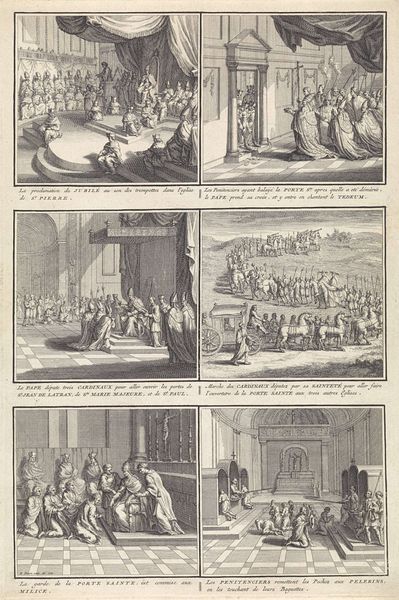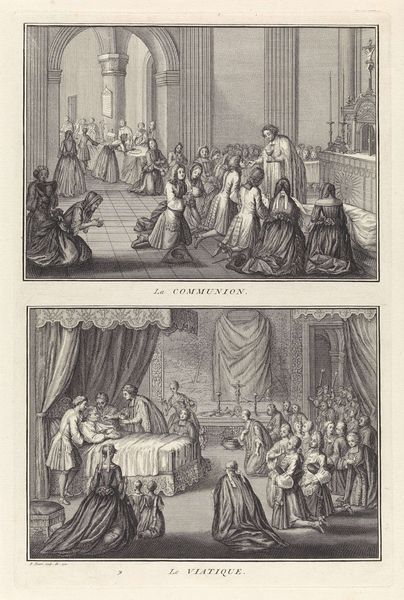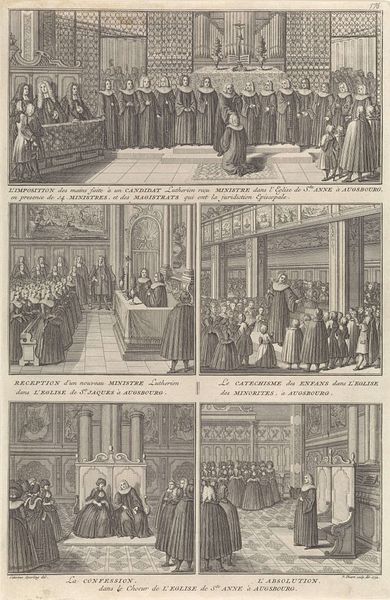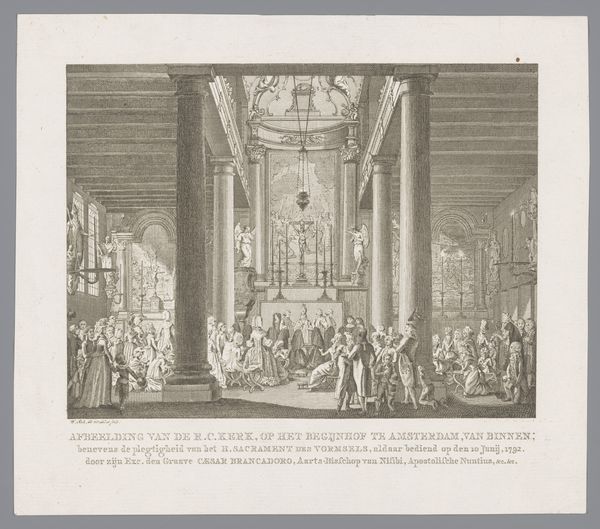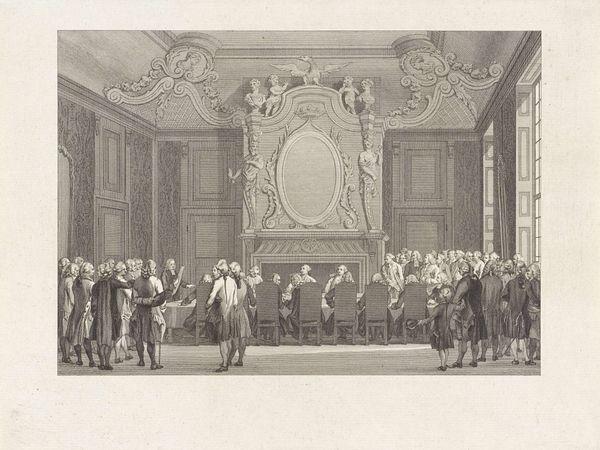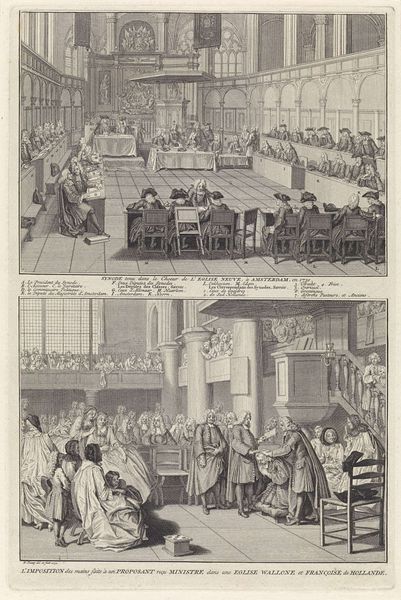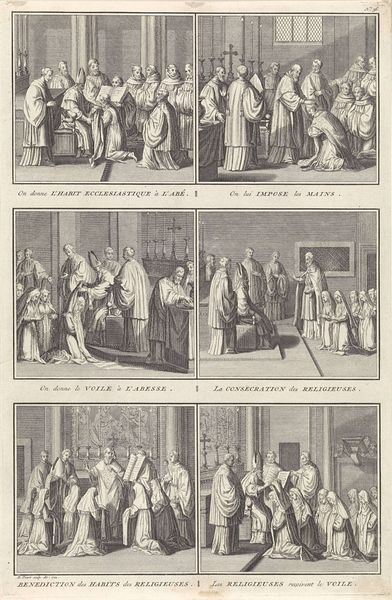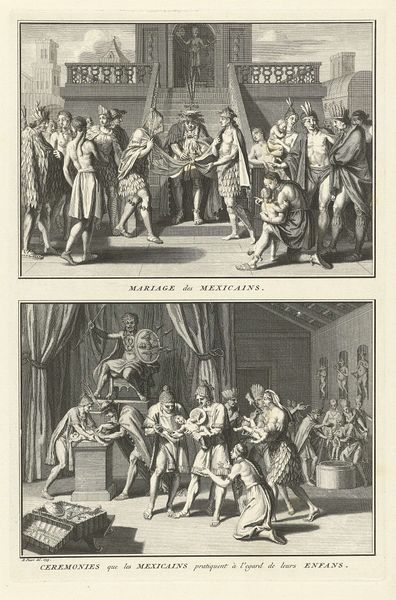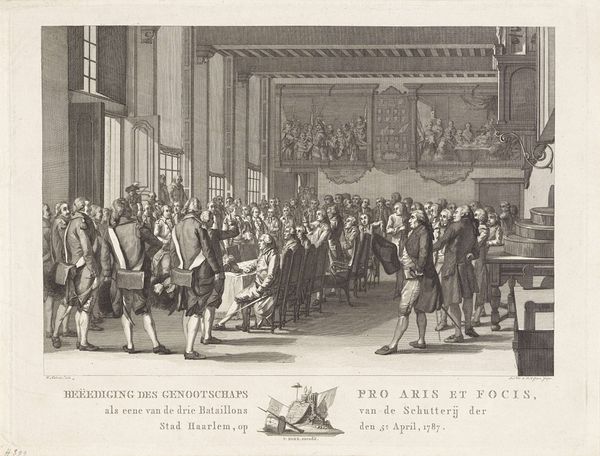
Blazen van de ramshoorn op joods nieuwjaar / Viering van Grote Verzoendag 1725
0:00
0:00
drawing, print, etching, engraving
#
drawing
#
baroque
# print
#
etching
#
islamic-art
#
history-painting
#
engraving
Dimensions: height 335 mm, width 216 mm
Copyright: Rijks Museum: Open Domain
Editor: So, this is "Blazen van de ramshoorn op joods nieuwjaar / Viering van Grote Verzoendag," made in 1725 by Bernard Picart. It’s an etching and engraving, depicting two scenes inside a synagogue. I find the detailed depiction of the clothing and the architecture fascinating. What can you tell me about this piece? Curator: Considering this print's means of production, it invites an investigation into Picart's workshop practice. Were these engravings made to satisfy a particular consumer market? What was the role of printmaking in circulating information and shaping perceptions about Jewish religious practices in 18th century Europe? Editor: That's a great point. It wasn't just artistic expression but also a product being marketed to an audience. How does understanding that shift our understanding of the work? Curator: It asks us to think about the labor involved. Who actually created the plate? Was it Picart, or assistants? Understanding the division of labor within his studio is key. Furthermore, the use of etching and engraving, combined, allowed for the efficient production of copies for wider distribution. Was this meant for a general audience or for a specific, more elite one? Editor: So, thinking about the materials—the metal plates, the ink, the paper—and the processes involved, frames the image differently, doesn't it? The social context matters, too. Curator: Precisely. Consider how such images, circulated widely, might reinforce or challenge prevailing social hierarchies or stereotypes. How did the artist’s choices concerning the materiality contribute to its reception and purpose within its original setting? What biases could be present? Editor: I never considered how deeply the material aspects could influence interpretation like that! Curator: That's the crux of it, seeing beyond the representational and engaging with the conditions of production. Now, consider this as just one example for the kind of systematic interpretation one could follow for other artwork! Editor: Right, that’s so helpful. I see that focusing on process opens up a whole new layer of understanding and can really change our understanding of what it means to study art.
Comments
No comments
Be the first to comment and join the conversation on the ultimate creative platform.
